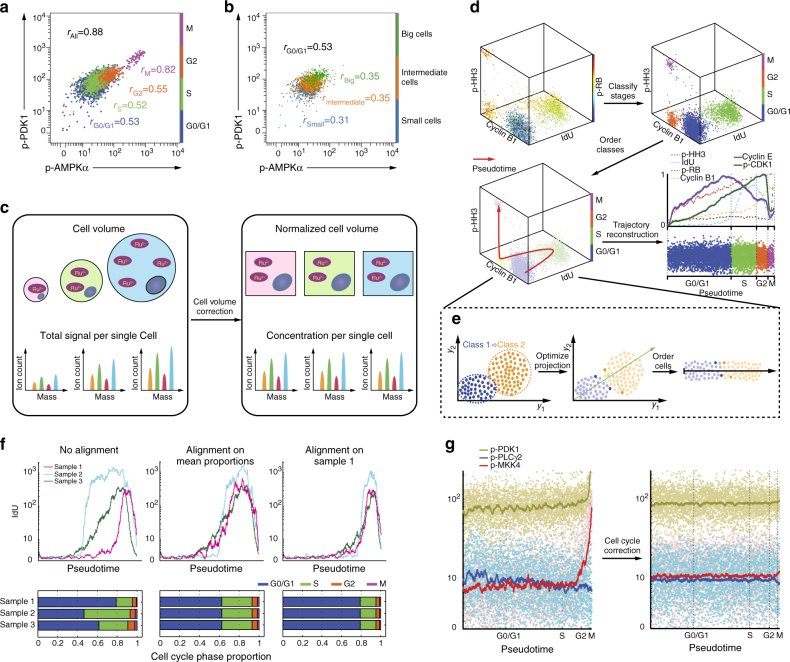Fig. 1.
Cell-volume and cell-cycle biases in mass cytometry data and their corrections using CellCycleTRACER. a Biaxial plot of p-PDK1 (Ser241) vs. p-AMPKα (Thr172) in THP-1 cells, where pre-gated cell-cycle phases are indicated by different colors. Computation of Pearson correlation coefficients across cell-cycle phases indicates a strong cell-cycle bias. b Biaxial plot of p-PDK1 (Ser241) vs. p-AMPKα (Thr172) in G0/G1 phase THP-1 cells that were pre-gated by cell volume as indicated by different colors. Pearson correlation coefficients are indicative of the cell-volume bias. c Cell-volume correction using ASCQ_Ru measurements removes cell-volume variability and transforms raw counts of measured markers into relative concentrations at single-cell resolution. d Construction of cell-cycle pseudotime initiates with automatic classification of the cells into discrete cell-cycle phases using measurements of IdU, cyclin B1, p-HH3, and p-RB25. The optimal trajectory across phases is constructed by projecting the data in a one-dimensional embedding function analogous to cell-cycle pseudotime. Mean trajectories of all measured cell-cycle markers across the reconstructed pseudotime recapitulate known behavior. Markers used to construct the pseudotime (IdU, cyclin B1, p-HH3, and p-RB) are shown as dashed lines, additional cell-cycle markers used as validation (cyclin E and p-CDK1) are shown as solid lines. e Simplified example of the trajectory reconstruction technique. By exploiting prior information of the class labels for each cell and the order of the classes, the best embedding function is computed by selecting the one that optimally preserves the known ordering across all cells in the new subspace defined by the embedding. f CellCycleTRACER aligns cell-cycle pseudotime by equalizing cell-cycle phase duration across all analyzed samples. g CellCycleTRACER correction for cell-cycle redistributes the single cells independently of cell-cycle variation

